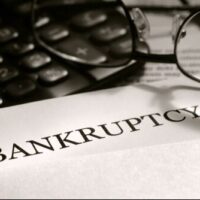Can I File for Bankruptcy More Than Once?

The term “bankruptcy” can have a negative connotation, but bankruptcy laws are designed to help people, not hurt them. Job loss, financial hardship, sudden medical expenses: these are all reasons to seek relief through bankruptcy. In fact, it is not unusual for a person to fall into economic hardship more than once.
If you’ve filed for bankruptcy in the past, economic hardship could force you to consider the possibility of filing a second time. Depending on your unique financial circumstances, bankruptcy laws may permit you to file again.
The Rules of Filing for Bankruptcy Twice
Several factors determine whether you can file for bankruptcy twice, and the rules differ depending on the chapter of bankruptcy you filed in the past. If, for example, you want to file for Chapter 7 bankruptcy, you must wait eight years before filing after a prior Chapter 7 filing. On the other hand, if you wish to file Chapter 7 bankruptcy with a prior Chapter 13 or Chapter 12 case, you must wait six years.
Chapter 13 bankruptcy is not subject to the same rules. If you want to file Chapter 13 bankruptcy with a prior Chapter 12, 11 or 7 bankruptcy, you must wait four years before seeking a second case. After filing Chapter 13 bankruptcy, you must wait two years to file for another Chapter 13 bankruptcy case.
If your case doesn’t end with a discharge, these restrictions may not apply. In other words, if the court does not release your from liability for your debts, you may be able pursue a second filing sooner. While discharge is the ultimate goal of any bankruptcy case, some cases end before courts discharge the debt.
Filing for “Chapter 20 Bankruptcy”
Chapter 20 bankruptcy is a common practice, although it is not a legal term. Chapter 20 occurs when you discharge debts through Chapter 13 bankruptcy after filing Chapter 7. While you cannot file for Chapter 13 immediately after Chapter 7, it is a viable option if you want to restructure your non-dischargeable debts several years after the original case.
Watch out – multiple filings can hinder automatic stay.
Automatic stay is enacted immediately after you file for bankruptcy. During this time, creditors cannot approach you for payment, giving you time to regroup before the case moves forward. This protection is a major asset, but prior bankruptcy cases may limit the level of protection automatic stay provides.
By law, automatic stay ends in 30 days if you filed for bankruptcy within the last year. If you file two times within a year of your third filing, the court will not offer you any protection from creditors through automatic stay.
If you’re considering bankruptcy, speak with a Southern California bankruptcy lawyer from Wadhwani & Shanfeld today. We are here to help you take the first step toward a better financial future, so call our office and schedule a free case evaluation. The sooner we hear from you, the sooner we can help.
